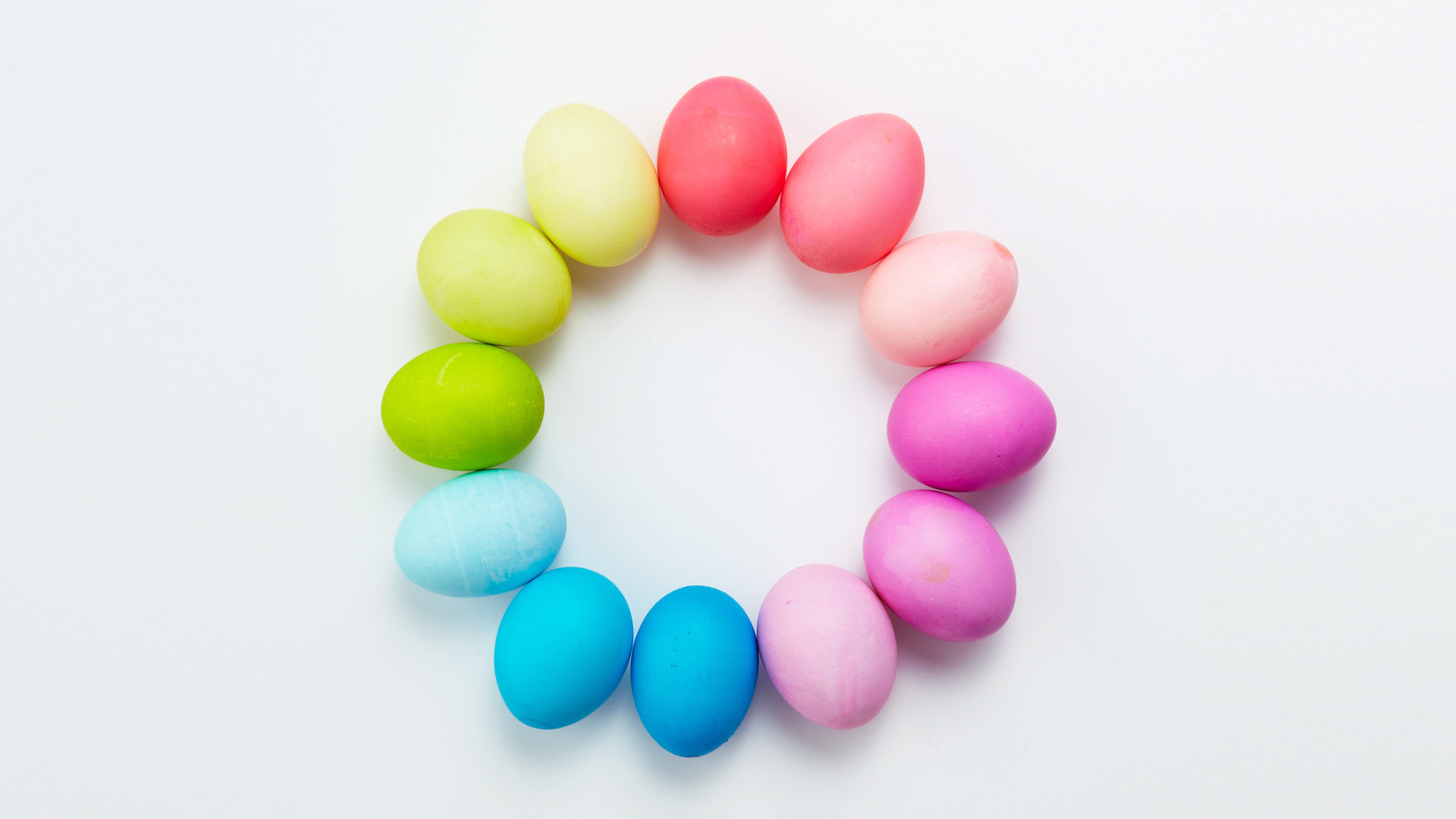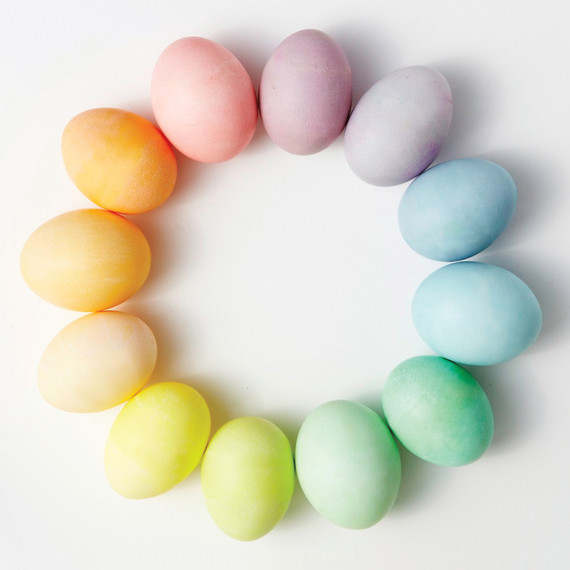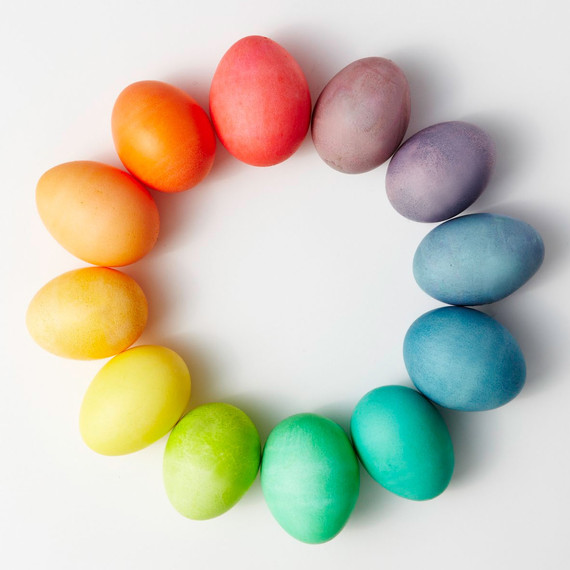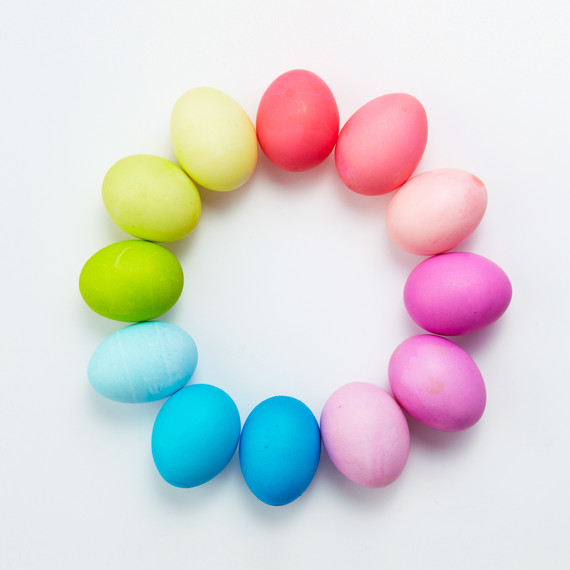
Egg Dyeing Basics
Before dyeing eggs, protect your work area with paper towels or newspaper. Wipe eggs with white vinegar; this will help them dye more evenly.
Recipe
Mix 1 teaspoon of white vinegar and 1 cup of hot water in a heatproof bowl, cup, or jar deep enough to let you submerge an egg completely. Add liquid food coloring as indicated in the free printable charts for each hue. Submerge eggs in dye.
Color Wheel Hues
To create different tints of color, vary dipping times: Submerge eggs for less than 5 minutes for light colors and leave the egg in for 10 minutes or more for deeper shades.
Using tongs makes handling the eggs easy. When using more than one color on an egg, it usually works best if you use similar colors, such as green and blue or red and orange (colors that are adjacent on these “color wheels.”) Very different colors, such as red and green, tend to look muddy if they overlap (these colors are opposite each other on the color wheel).

Photography by: Emily Kate Roemer
Light Hues
To get pretty pastel eggs, dip them in the colored water for shorter periods of time.
Follow our handy color wheel chart to see how many drops of each color to add to your water.

Photography by: Emily Kate Roemer
Dark Hues
For more richly hued eggs, leave your eggs in the water longer (in some cases, more than 10 minutes).

Photography by: Emily Kate Roemer
Neon Hues
To add a bright pop of color to your to your Easter basket, follow our neon bright color wheel.
Get the Easter Egg Color Wheel Charts
SOURCE:http://www.marthastewart.com/1064251/easter-egg-dyeing-color-wheel